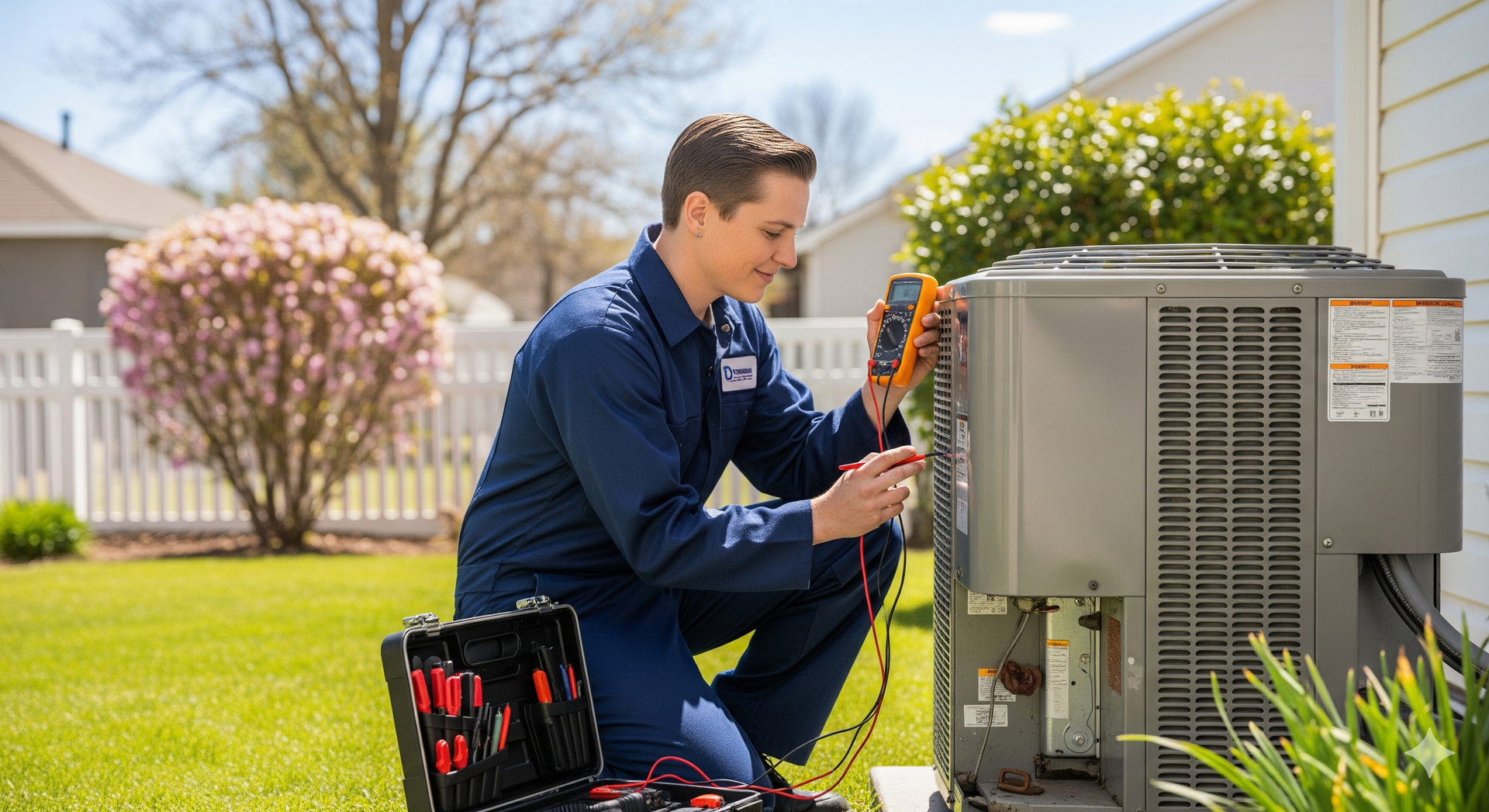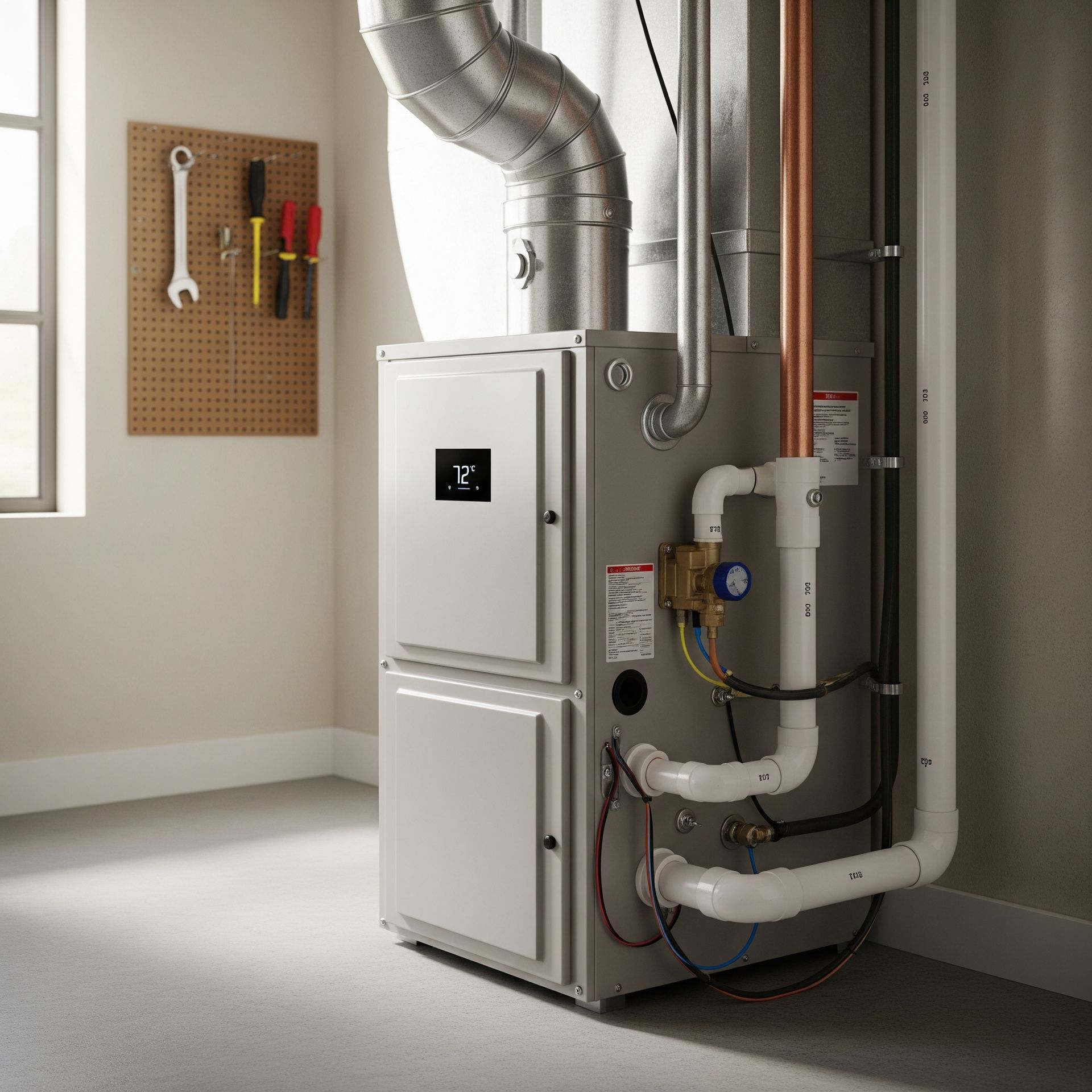Signs Your Furnace Might Be Failing This Winter Season
Winter brings cozy nights and warm homes, but a failing furnace can quickly turn comfort into chaos. As temperatures drop, your furnace becomes the heart of your home, working tirelessly to keep you warm. However, like any mechanical system, furnaces age and wear out, often showing subtle warning signs before a complete breakdown. Recognizing these signs early and scheduling furnace service and installation can save you from unexpected outages, costly repairs, and chilly nights. For broader maintenance and comfort solutions, consider exploring professional residential HVAC services to keep your home warm all winter long.
Key Takeaways
- Strange sounds like banging or rattling can signal mechanical issues.
- A sudden spike in heating costs may indicate inefficiency.
- Short or frequent on-off cycles suggest potential malfunctions.
- Uneven heat or cold spots are red flags for furnace issues.
- A yellow or flickering flame could indicate carbon monoxide risks.
- Systems over 15 years old are more prone to failure.
Unusual Noises Coming From Your Furnace
Furnaces typically hum quietly when operating, but unusual noises are often the first sign of trouble. Sounds like banging, rattling, or screeching can indicate loose or broken components. For example, a loud bang might point to delayed ignition, where gas builds up before igniting, while a screeching noise could signal a worn-out belt or motor bearings. These issues, if ignored, can escalate into major repairs or even a full system failure.
Listen closely for:
- Banging or popping: Could indicate ignition problems or duct installation or remodeling issues causing pressure changes.
- Rattling: Loose panels or debris inside the system.
- Screeching or squealing: Worn belts or motor issues.
If you hear these noises, schedule a professional inspection promptly to diagnose and address the problem before it worsens.
Increased Energy Bills Without Explanation
A sudden spike in your heating bill, despite consistent usage, is a telltale sign your furnace is losing efficiency. As furnaces age, components like filters, blowers, or burners may struggle, forcing the system to work harder to produce the same heat. This inefficiency drives up energy consumption, hitting your wallet hard.
To identify this issue, compare your current bills to previous winters. A 10-20% increase, without changes in thermostat settings or extreme weather, could point to a failing furnace. Other culprits might include clogged filters or duct leaks, but a professional technician can pinpoint the exact cause. Regular maintenance, like annual tune-ups, can help prevent efficiency losses and keep costs in check.
Inconsistent or Insufficient Heating
If some rooms are toasty while others stay chilly, or if your furnace struggles to maintain a consistent temperature, it’s a sign something’s wrong. Uneven heating often stems from issues like a failing blower motor, clogged ducts, or a malfunctioning thermostat. In severe cases, the furnace may not produce enough heat to keep your home comfortable, leaving you bundled up indoors.
Check for these symptoms:
- Cold spots: Certain areas of the home remain cooler than others.
- Weak airflow: Vents produce minimal or no warm air.
- Thermostat issues: The furnace doesn’t respond to temperature settings.
Addressing these problems early can prevent a complete system failure during the coldest months.
Frequent On-Off Cycling
A furnace that turns on and off too often, known as short cycling, is a red flag. This behavior can result from various issues, such as an oversized furnace, a clogged filter, or a faulty thermostat. Short cycling not only reduces comfort but also puts excessive strain on the system, accelerating wear and tear.
Here’s a quick breakdown of potential causes:
| Issue | Possible Cause | Solution |
|---|---|---|
| Short cycling | Clogged air filter | Replace filter monthly |
| Inconsistent temperatures | Faulty thermostat | Test or replace thermostat |
| Overheating | Blocked vents or ductwork issues | Clear obstructions, inspect ducts |
Yellow or Flickering Pilot Light
For gas furnaces with a pilot light, its color and behavior are critical indicators of health. A healthy pilot light burns blue and steady. A yellow or flickering flame could signal incomplete combustion, potentially producing dangerous carbon monoxide. This issue might stem from a dirty burner or inadequate ventilation.
If you notice a yellow pilot light, act immediately:
- Turn off the furnace for safety.
- Ventilate the area to disperse potential gases.
- Call a professional to inspect and repair the system.
Carbon monoxide is odorless and deadly, so installing detectors in your home is a must for added safety. For homes with unique needs, such as mobile units, proper
mobile home chimney installation can also help ensure safe furnace operation.
Age of the Furnace
The age of your furnace plays a significant role in its reliability. Most furnaces last 15-20 years with proper maintenance. If your system is approaching or exceeding this range, it’s more likely to fail, especially during the heavy demands of winter. Older furnaces lose efficiency, struggle to heat effectively, and require frequent repairs.
Check your furnace’s age by looking at the manufacturer’s label, typically found inside the unit. If it’s over 15 years old, start planning for a replacement, even if it’s still functioning. Newer models are more energy-efficient, saving you money in the long run.
Visible Signs of Wear or Damage
Physical wear on your furnace can also indicate potential failure. Rust, cracks, or corrosion on the unit or its components suggest the system is deteriorating. These issues can compromise performance and safety, especially in gas furnaces where leaks could occur.
Inspect your furnace for:
- Rust or corrosion: Common in older units or humid environments.
- Cracks in the heat exchanger: A serious issue that can leak carbon monoxide.
- Soot buildup: Indicates incomplete combustion or burner issues.
If you spot these signs, contact a professional immediately to assess whether repair or replacement is necessary.
Strange Odors From the Furnace
Unusual smells from your furnace are another warning sign. A burning or dusty odor Ascertain odor when the furnace starts could be due to accumulated dust burning off, which is normal for the first use of the season. However, persistent odors like:
- Musty or moldy smells: Could indicate moisture or mold in the system.
- Burning plastic or oil: Might suggest electrical issues or oil leaks.
- Gas-like odor: Could signal a gas leak, requiring immediate attention.
Any odor that lingers beyond a few hours warrants a professional inspection to ensure safety and system health.
Frequent Repairs or Maintenance Needs
If your furnace requires frequent repairs, it’s a sign that the system is nearing the end of its lifespan. Constant fixes for issues like faulty ignitions, broken sensors, or worn-out parts can add up quickly, often costing more than a new, efficient unit. Track how often you’ve needed repairs in the past 1-2 years. If you’re calling a technician multiple times per season, it may be time to consider replacement. For many homeowners, flexible financing options make upgrading to a modern system more manageable.
Poor Indoor Air Quality
A failing furnace can also affect your home’s air quality. Dust, allergens, or even carbon monoxide can circulate if the system isn’t functioning properly. Symptoms like increased allergies, headaches, or fatigue could point to furnace-related issues, especially if filters are clogged or the system is producing harmful gases.
To improve air quality:
- Replace filters every 1-3 months.
- Ensure proper ventilation in your home.
- Schedule regular furnace maintenance to catch issues early.
Frequently Asked Questions
How often should I have my furnace inspected?
Annual pre-winter inspections are crucial for optimal system performance and longevity. This proactive approach identifies and rectifies potential issues early, preventing costly breakdowns and extending equipment lifespan. Regular maintenance ensures efficient, reliable operation, especially in colder months, protecting investments, boosting energy efficiency, and enhancing comfort.
Can I fix a failing furnace myself?
While homeowners can handle simple furnace maintenance like changing air filters, complex repairs involving gas lines or electrical components require a licensed HVAC professional due to significant safety risks. DIY attempts could void warranties, cause injury, or damage property, leading to hazards like gas leaks or electrical fires.
What’s the average lifespan of a furnace?
Furnaces typically last 15-20 years with proper maintenance. However, their energy efficiency can decline sooner, increasing utility bills. Regular servicing is vital to prolong lifespan and maintain efficiency, preventing premature failure and higher running costs.
How can I tell if my furnace is energy-efficient?
Check your furnace's AFUE rating to assess home energy efficiency. This percentage indicates fuel-to-heat conversion. Modern furnaces (over 90% AFUE) waste little energy, while older models (60-70% AFUE) lose significant heat, increasing bills and carbon footprint. Knowing your AFUE helps determine if an upgrade is beneficial.
Is it better to repair or replace a failing furnace?
Replace your furnace if repairs are frequent, costly, or the unit is over 15 years old. A new, more efficient furnace saves energy and prevents breakdowns, proving more cost-effective than ongoing repairs.
Final Thoughts
A failing furnace can disrupt your comfort and safety during winter, but recognizing the warning signs early can make all the difference. From strange noises to rising energy bills, these indicators provide a chance to act before a minor issue becomes a major breakdown. Regular maintenance, timely repairs, and knowing when to replace an aging system are key to keeping your home warm and safe. Stay proactive by scheduling annual inspections and addressing problems promptly to ensure your furnace performs reliably all season long.
For personalized guidance or to book a service, reach out through our
contact us page today. And if you’re looking to save on your next service, don’t forget to check our current
special offers for valuable discounts.


